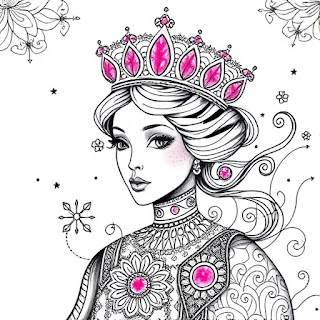Introduction
The art world, once defined by the tangible brushstrokes of oil on canvas or the chiseled form of stone sculpture, has undergone a seismic shift in recent decades. The advent of digital technology has opened up a new frontier, birthing a vibrant and dynamic landscape: the realm of digital art. This blog will serve as a portal into that world, exploring its diverse forms, the tools that empower its creation, and the impact it has had on the very definition of art itself.
What exactly is digital art?
Simply put, it’s art created using digital technology. This encompasses a vast range of styles and techniques, from digital painting and illustration, using software like Photoshop and Procreate, to 3D modelling and animation, crafting immersive virtual environments and characters. It includes generative art, where algorithms create complex and evolving visual patterns, and pixel art, a nostalgic nod to the early days of video games. The unifying factor is that the final product exists, at least initially, in the digital realm.
The tools of the digital artist are as diverse as the art they create. Gone are the days of relying solely on physical media. Instead, artists wield styluses on tablets, sculpting intricate details with precision and ease. They manipulate code to generate mesmerizing patterns and utilize animation software to bring their imaginations to life. The accessibility of these tools has democratized the art world, allowing aspiring artists from all backgrounds to experiment and share their creations with a global audience. Affordable tablets, readily available software, and the vast resources of the internet have empowered a new generation of digital creators.
One of the most compelling aspects of digital art is its inherent versatility. Mistakes, once a source of frustration, can be easily undone with the click of a button. Colors can be experimented with endlessly, textures can be layered and manipulated, and entire compositions can be transformed in a matter of minutes. This freedom allows artists to push boundaries, explore unconventional ideas, and iterate on their work with unparalleled speed and flexibility. Furthermore, digital art lends itself beautifully to interactive experiences. Imagine an artwork that responds to touch, changes with the time of day, or even adapts to the viewer's emotions. The possibilities are truly endless.
However, the rise of digital art hasn't been without its challenges. Questions of authenticity and ownership have plagued the digital art world since its inception. The ease with which digital images can be copied and distributed raises concerns about copyright infringement and the potential for devaluation of original artwork. The emergence of NFTs (Non-Fungible Tokens) has offered a potential solution by providing a secure and verifiable way to prove ownership of digital assets, but the debate surrounding their environmental impact and long-term viability continues.
Ultimately, digital art is not just a technological novelty; it's a powerful form of artistic expression that is shaping the future of the art world. It challenges our preconceived notions about what art can be, how it can be created, and how it can be experienced. Through this blog, we aim to explore the diverse landscape of digital art, highlighting the innovative techniques, the groundbreaking artists, and the ongoing debates that define this dynamic and ever-evolving field. Join us as we delve into the pixelated wonders and algorithmic intricacies of the digital canvas, and discover the endless possibilities that lie within.
.png)
.png)




No comments:
Post a Comment